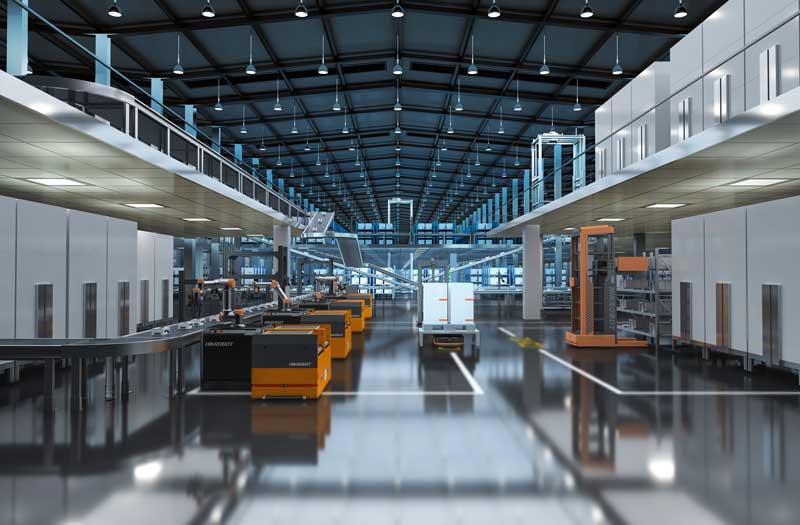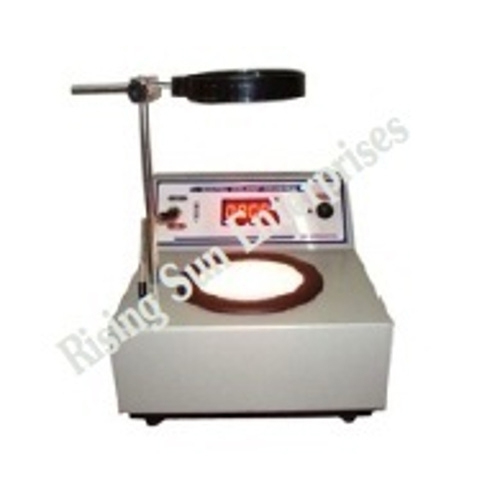Schedule a Call Back
India taking strides towards Industry 4.0 revolution
 Industry News
Industry News- Nov 01,22

Indian manufacturing industry and its ecosystem is making strides in the Industry 4.0 revolution. The participation by the industry may not be big in size and scale, but smart moves are going to have great impact. According to a NASSCOM study report, Industry 4.0 is at an inflection point in Indian manufacturing, with more than two-thirds of Indian manufacturers embracing the digital transformation by 2025; thereby, contributing to the goal of raising India’s manufacturing GDP to 25 per cent. Indian manufacturing has started pivoting to digitalization, with $5.5-$6.5 billion spent on Industry 4.0 in FY21.
While 50 per cent of the Industry 4.0 spend is on foundational tech (Cloud and IoT), 35-40 per cent of the companies are at PoC stage and will need rapid PoC-to-production transition. In the next 18-24 months, companies plan to ramp up investments in emerging network tech, big data analytics, central and remote-controlled monitoring, and automation.
It is clear that measurable RoI, consistent data policy, ecosystem support, and investments by GoI are the key to accelerate adoption of Industry 4.0. India’s manufacturing clusters or industrial corridor policy will be critical in creating smaller hubs for focused investment and innovation. MSME incentives through dedicated GoI contracts or industry-led initiatives will transform the 90 per cent base of Indian manufacturing. Shifting focus from cost to incentives for quality and globally competitive solutions will boost adoption.
Need for modernisation to increase competitiveness
Modernisation is the improvement or upgrading of existing code and physical infrastructure (plants, machines, processes, and so on) to improve product quality and provide consumer value to achieve business objectives. It is also undertaken to engage in proactive competition and gain competitive advantages. This also helps the company to face the workforce attrition, retention, and training scenarios effectively. It is no secret in manufacturing that companies face difficulty in finding skilled and qualified employees. It also helps to understand the key role played by technologies like automation, robotics, advanced instrumentation & sensors, IoT/IIoT, and digitalization in the advancement of manufacturing.
Industrial automation and robotics are the use of computers, control systems and information technology to handle industrial processes and machinery, replacing manual labour and improving efficiency, speed, quality and performance.
Automated industrial applications range from manufacturing process assembly lines to surgery and space research. Early automated systems focused on increasing productivity (as these systems do not need to rest like human employees), but this focus is now shifting to improved quality and flexibility in manufacturing and more. Modern automated systems are developing beyond mechanisation with the addition of artificial and machine learning.
Making Indian industries smart
Smart factory is technology driven concept that is driving the future of manufacturing by bringing new changes in manufacturing plants across the globe. It is setting the trend in the whole new world of Industry 4.0. A new in which latest technologies, including Internet of things (IoT), Industrial Internet of Things (IIoT), autonomous robots, simulation, augmented reality (AR), big data, cloud computing, additive manufacturing, vertical and horizontal system integration. Here automation come together with robotics connected remotely to systems equipped with machine learning algorithms that can control the robotics with minimum human support.
Industry 4.0 has highly intelligent, connected systems that create a fully digital
value chain. Here the objective is that the machines talk to other machines and products and information is processed and distributed in real time, resulting in profound changes in the entire industrial ecosystem.
The manufacturing trends in 2022 include:
Accessible automation: New technologies that have made automation more accessible to manufacturers are changing the way companies operate. “Automation for all” is the next step in the industry. Automation is made possible with easy-to-use robotics solutions, user-friendly Manufacturing Process Management (MPM) systems, and human-robot collaboration. With manufacturing automation, organisations are reducing costs, optimising workflows, and increasing their bottom line.
Mobile robotics: According to the ABI Research 2022 Trend Report, a total of 45,000 collaborative robots (cobots) and 452,000 mobile robots are expected to be shipped in 2022, a 65 per cent and 51 per cent increase from 2021.One of the primary drivers of this manufacturing trend is autonomous mobile robots (AMRs). While robots used to mean ultra-sophisticated technology that required trained roboticists, new robotics technology is making automation attainable for companies of all sizes.
Internet of things (IoT): IoT helps manufacturers connect to and monitor the various components of their operations, gaining insight never before possible. This connectedness gives manufacturers valuable data that enable them to change, optimise, and improve every facet of their manufacturing process. Using smart sensors and cloud connectivity powered by the internet, IoT is propelling the advancement of the industry. Companies are improving safety, saving money, streamlining manufacturing and even creating new products with IoT capabilities.
Enterprise resource planning (ERP): Enterprise resource planning technology has been in the manufacturing industry for years but is gaining widespread usage with the availability of cloud-based SaaS options that are easy to deploy and more affordable for small businesses. ERP systems help manufacturers automate different areas of operations under one comprehensive system. This universal touchpoint then gives manufacturers the insight they need to oversee the entire manufacturing operation and make improvements and adjustments where needed.
Universal connectability: Technologies and innovations in the manufacturing space were traditionally billed as a one-size-fits-all solution. Your operations had to fit the mold of the technology, which limited manufacturers’ options and made certain capabilities unavailable to them. New manufacturing trends are seeing that balance flip. Essentially, technology and manufacturing advancements can now be tailor-made to your operations, without the cost of a fully custom solution.
Industry 4.0: A term created to describe the current trend in manufacturing toward “smart factories,” Industry 4.0 is shorthand for the fourth industrial revolution. Many of the trends on this list contribute to and make Industry 4.0 possible. The widespread adoption and understanding of the latest manufacturing tech – IoT, the cloud, advanced computers, robotics, and the human workforce – all work together to empower Industry 4.0. Companies looking to stay relevant, competitive, and thrive in the marketplace must take advantage of the technological advancements that have sparked the fourth revolution in the manufacturing industry.
Artificial intelligence (AI) and machine learning (ML): Because companies have access to more data than ever before, tools that enable them to make the most of that data, like artificial intelligence and machine learning, are having a major impact on manufacturing. AI doesn’t mean walking, talking robots, but instead refers to a computer system’s ability to recognize trends and infer logical conclusions that can help manufacturers make data-driven decisions.
AI and machine learning can help improve many aspects of a manufacturing operation, such as: Inventory management, Supply chain visibility, Warehouse cost reduction, Asset tracking, Forecasting accuracy, Transportation cost reduction and more
Predictive maintenance: Made possible by IoT, AI, and machine learning, predictive maintenance is helping manufacturers avoid downtime by catching issues before they arise.
Supply chain technology: Overall supply chain operation is being impacted by advances in high mix, low volume (HMLV) manufacturing. Effectively managing the supply chain is vital for manufacturers looking to save on costs, while delivering products to customers when they want it, how they want it. Manufacturing trends are seeing companies invest in technologies that touch every step of the manufacturing process; procurement, inventory, assembly, logistics, transportation, and sales are all impacted by new technologies. For example, adding sensors or barcodes to items allows companies to scan and track parts throughout the process, helping companies quickly see where improvement can be made.
Mobile manipulators: Think of mobile manipulators as the marriage of a robotic arm and an AMR, essentially a fully mobile, self-navigating robot arm that can perform a variety of operations. Robotic arms were traditionally stationary automation tools, helping manufacturers in just one step of the assembly process. But with new-found mobility, they are being used to automate other key areas of manufacturing and can be optimized for collaboration with the human workforce (more on this later).
Collaborative robots (cobots): The addition of robotics and automation to the manufacturing industry has sparked concerns about possible negative impact on the workforce. What manufacturing trends are showing is just the opposite – robots and people working together, collaboratively, in factories and warehouses can get more work done, faster and more safely. Cobots are built for the human workforce to use as a valuable tool that helps improve overall efficiency in the workplace. Consider them as your associate’s “ideal co-worker”. AMRs are uniquely tailored to this working partnership, as they can be programmed to consistently perform non-value-added work, like moving heavy products, while people focus on skilled labour.
Additive manufacturing: This is the official industry term for what is better known as 3D printing. Using computer-aided-design (CAD) software, manufacturers can now custom build parts and products one layer at a time for their customers. Don’t just assume that additive manufacturing is making entire, complete products – this process is also ideal for creating models, prototypes, molds, lost-wax castings, or components of final, finished products. Additive manufacturing is a fast-growing trend in the industry as it is first and foremost a significant time and cost-saving tool.
Automated picking: Speaking of cobots, one of the most common uses of cobot systems in a logistics setting is for picking. In traditional order fulfillment roles, the physical act of walking to pick product accounts for 50 per cent of the entire process, eating up valuable time and money.
Automated picking is achieved when a robot is used to travel throughout the warehouse grabbing the correct product, leaving people to do more skilful work in the fulfilment process. These advances in manufacturing and logistics are improving efficiency – where a human worker could pick between 60 and 80 orders an hour, an automated system can pick up to 300 in the same time frame.
Challenges and solutions on the path
Smart factory challenges come in multiple forms, some of them are as follows:
Technical skills gap: A “technical skill gap” that prevents them from benefiting from their investment. To successfully implement new technology and maintain operations, a company must have a workforce that possesses “digital dexterity”— the people must understand both the manufacturing processes and the digital tools that support those processes.
Data Sensitivity: A ‘data sensitivity’ culture required from increasing concerns over data and IP privacy, ownership, and management. To successfully implement an AI algorithm, for example, requires that there is data to train it and test it. This means that data must be shared, yet many companies are reluctant to share their data with third-party solution developers. There is also a strong belief that our current data governance policies for internal use within the organization are inadequate to support cross-organisational data sharing.
Interoperability: Lack of interoperability between protocols, components, products, and systems. This is an ongoing struggle that is not new. Today, however, companies are becoming more frustrated with this interoperability as it limits their ability to innovate. It also limits their ability to upgrade system components, since they cannot easily “swap out” one vendor for another or one part of the system for another.
Security: Security threats are growing concern, both in terms of current and emerging vulnerabilities in the factory. The combination of physical and digital systems in a smart factory makes real-time interoperability possible — but it comes with the risk of an expanded attack surface. With numerous machines and devices connected to single or multiple networks in the smart factory, vulnerabilities in any one of those pieces of equipment could open up the system to attack. Companies will need to anticipate both enterprise system vulnerabilities and machine level operational vulnerabilities.
Handling data growth in amount and velocity as well as sense-making: As AI usage expands, companies will be faced with more data, being generated at a faster pace, and in multiple formats. AI algorithms need to be easier to comprehend—i.e., how does the algorithm arrive at a recommendation? —and these algorithms must be able to combine data that is often of different types and timeframes.
Role of SMEs in India
Most Small and Medium Enterprises (SMEs) fail to reap the benefits of the latest technological developments (like industry 4.0) in their sector due to a lack of expertise and awareness. Hence MSMEs need to be apprised of the technological developments that are significant for the growth of their businesses. It is important for scientific research bodies to remain involved with the local MSME clusters, and take notice of their technology-related problems and issues. However, there have been concerted efforts to offer solutions to MSMEs on these issues as the government is working towards the launch of E-commerce portal ‘Bharat Craft’ that will act as a direct interface between sellers and buyers.
Smart manufacturing means bringing the elements of smart technology – sensing inputs, computing power, always-on connectivity, artificial intelligence, and advanced data analytics – to the traditional production process. In order to manage the transition to the smart factory, it is necessary to consider not only the technological elements, but also the human elements, which include the workers’ training and the organisation of personal skill building activities.
Making SMEs smarter
Large enterprises can often leverage bigger budgets to tap into more resources to get things done. SMEs, however, need to increase operational efficiency by optimising their resources and are usually more conservative with operational costs. This can be done by implementing smart factory technology applications only after checking the viability and cost imperative. Trying to accomplish more with less doesn’t mean that SMEs do less. Streamlining business processes, and identifying and implementing smarter working methods can do the trick. This way, SMEs can significantly lower costs while keeping productivity high.
By implementing following steps, SMEs can create the perfect smart factory and join the Industry 4.0 revolution:
Invest in security: A recent report on smart factories shows, producers today need extremely sophisticated technologies to control the new industrial IoT scenario, that allows the connection of millions of machineries through global networks. The realisation of a safe connection among the operative and IT networks is therefore a very important factor in order to be able to work with data in a safe way.
Develop wireless connections: In order to build a connected factory that is able to perform and answer rapidly to the clients’ request and the market’s changes, wireless connectivity is fundamental. The industrial equipment that use wireless connection help businesses in the process of improving their productivity, for example by allowing real-time decisions.
Use the collaboration technology: The collaboration technology (software for video calls, data sharing etc.) can help producers to overcome the everyday challenges linked to the improvement of processes, remote maintenance operations and IoT. In the modern industry a collaborative effort coming from the different departments of businesses is required from the initial ideation phase to the final production phase.
Invest in data management: The revolution of the Industry 4.0 allowed the introduction of digital elements in factories, which drastically changed the characteristics of the industry. The connection of network devices, IoT and the application of modern technologies to the industrial equipment allowed to monitor and receive information coming from most of the devices involved in the productive process. In order to build a successful smart factory, personal skills are important too: the next two steps focus, in fact, on the human element of the process.
Digital mindset and soft skills: Soft skills are important to create value within businesses. Think about problem solving, the ability of solving technical problems or find solutions through creative thinking, lateral and strategic, or through knowledge networking, that allows to identify the valuable information in the network useful to meet the business goals. The digital revolution that is making factories more smart than ever, require workers to adopt a digital mindset too, in order be ready to face this ever-changing context.
Be open to change: The new technologies are constantly improving and the innovation is modifying the industrial context: for this reason, it is necessary to be ready and have an open mindset, in order to be able to seek all the opportunities that come from the market.
This is how the fundamental step necessary to realise the perfect smart factory will be achieved.
Road ahead for Indian manufacturing sector
Government of India is promoting Industry 4.0 through various programs and initiatives. India has to move from manufacturing outfits of Industry 1.0 and 2.0 to Industry 4.0 and beyond. Department of Heavy industries (DHI) is raising awareness on the 4th Industrial Revolution to drive the Indian manufacturing to a ‘smart and intelligent manufacturing’ hub. Smart Advanced Manufacturing and Rapid Transformation Hub (SAMARTH) - Udyog Bharat 4.0 is an Industry 4.0 initiative of Department of Heavy Industry, Government of India under its scheme on Enhancement of Competitiveness in Indian Capital Goods Sector. The initiative aims to raise awareness about Industry 4.0 among the Indian manufacturing industry through demonstration centres.
Currently there are four centres, which include Center for Industry 4.0 (C4i4) Lab Pune; IITD-AIA Foundation for Smart Manufacturing; I4.0 India at IISc Factory R&D Platform; and Smart Manufacturing Demo & Development Cell at CMTI. The Ministry of Railways and Department of Science & Technology have joined hands in partnership with IIT Kanpur for taking up a unique project on Industry 4.0 by launching a Pilot Project for implementation at Modern Coach Factory, Raebareli.
There is a need for creating a roadmap to fast track the development of Industry 4.0 ecosystem to boost the Indian manufacturing sector, which represents a great opportunity for India by aiding economic growth, job creation and innovations. The Government of India has set an ambitious target of increasing the contribution of manufacturing output to 25 per cent of Gross Domestic Product (GDP) by 2025, from 16 per cent currently. To achieve this objective, “Make in India” must be integrated with the principles of Industry 4.0 and make the transition to smart manufacturing.
India is taking steps towards industry 4.0. India’s first smart factory is in progress at the Indian Institute of Science’s (IISc) Bangalore’s Product Design and Manufacturing (CPDM) Center, with an investment from The Boeing Company. Various Indian companies are increasing their focus and partnering with other companies for developing new IoT and M2M solutions. The Digital India initiative from the Government of India is expected to enhance the focus on IoT in tackling the domestic challenges.
Smart manufacturing technologies can offer a shot in the arm to boost India’s potential for long-term competitiveness and sustainability as it works towards earning its position as a global manufacturing hub.
About the author:
Ramesh Bhorania is the Vice President (Robotics and Factory Automation) at Prama Hikvision India Pvt Ltd.
Related Stories

Bharat Forge and Agile Robots sign MoU to Advance AI-Led Industrial Automation
The MoU brings together Bharat Forge’s manufacturing expertise and Germany-based Agile Robots’ AI-led robotics capabilities to accelerate intelligent automation across key civilian industrial se..
Read more
Rewarding Manufacturing Resilience
Effective January 1, 2026, Mexico imposed import duties ranging from 5 per cent to 50 per cent on a broad set of goods from non-free trade agreement (FTA) countries, including India, China, South Ko..
Read more
3D Printing Strengthens the Foundations of Smart Manufacturing
The global 3D printing market was estimated at $30.55 billion in 2025 and is projected to reach $168.93 billion by 2033, growing at a compound annual growth rate of 23.9 per cent from 2026 to 2033.
Read moreRelated Products

Compact Fmc - Motorum 3048tg With Fs2512
Meiban Engineering Technologies Pvt Ltd offers a wide range of Compact FMC - Motorum 3048TG with FS2512.

Digital Colony Counter
Rising Sun Enterprises supplies digital colony counter.
Robotic Welding SPM
Primo Automation Systems Pvt. Ltd. manufactures, supplies and exports robotic welding SPM.















